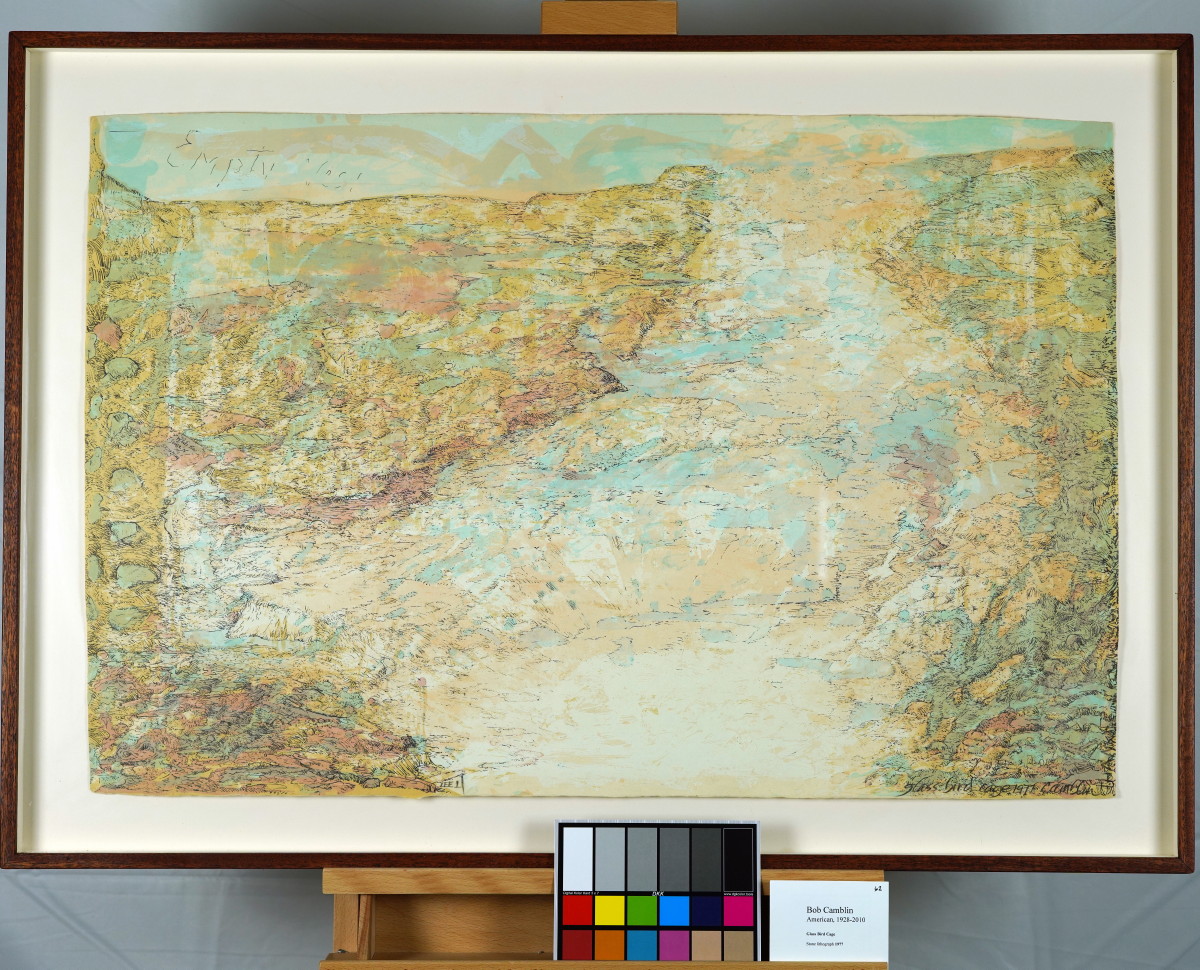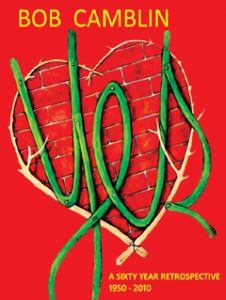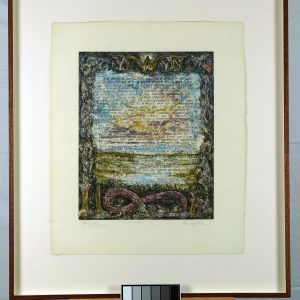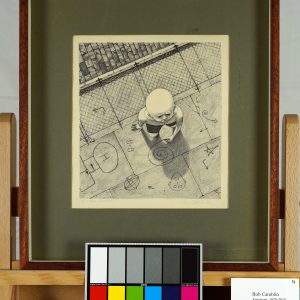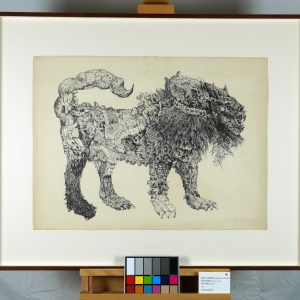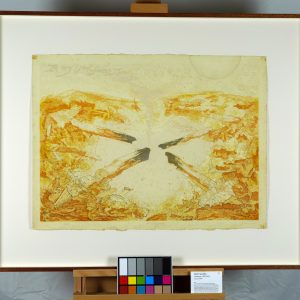Description
Glass Bird Cage, 1977Lithograph LEE1 PP w/ Little Egypt Enterprises
Signed
23 x 35.5 in. (image)
28.5 x 40.5 x 2 in. (frame)
original, includes certificate of authenticity from ArtTrust
The lithograph “Glass Bird Cage” features a desolate yet serenely complicated landscape dominated by soft pastel hues, with light pinks, blues, and earthy tones blending seamlessly across the canvas. The composition appears to dissolve into a void – a glass bird perhaps, – with few distinguishable features apart from the uneven texture of the ground and the wisps of color that hint at movement. The text, “Emptiness,” reinforces the sense of a barren, almost ethereal space, where forms seem to dissipate rather than solidify.
In Zen Buddhism, emptiness, or “Śūnyatā,” is not merely a void or nothingness; rather, it is the realization of the impermanent, interconnected nature of all things. The lack of solid structures in the painting invites a contemplative state, encouraging the viewer to let go of the need for fixed forms and embrace the fluidity of perception. The artwork symbolizes the space beyond thought, where the mind can rest in stillness, acknowledging the ephemeral quality of existence.
Drawing from the I Ching, the hexagram related to emptiness might be “Kun” (䷁), which represents receptivity and openness. Kun is associated with the earth, symbolizing a fertile ground ready to receive whatever is planted, yet without form or definition of its own. The painting’s palette of pale colors and indistinct shapes mirrors this quality, inviting the viewer to project their interpretations onto the canvas, just as the earth receives seeds to nurture diverse forms of life.
Combining the descriptive, Zen, and I Ching perspectives, “Emptiness” captures the profound beauty in formlessness and the boundless potential inherent in the absence of rigid definitions. The work encourages a meditative state, inviting viewers to let go of the material world’s attachments and find peace in the transient and undefined. It serves as a visual reminder of life’s impermanence and the open nature of reality, where all forms emerge and dissolve in an endless cycle.
The style of the piece may evoke abstract expressionism, with its focus on color fields and texture over defined forms. The gentle hues and lack of clear structure recall the works of artists such as Mark Rothko, who used color to convey spiritual and emotional states. Additionally, the concept of emptiness and open space might draw inspiration from Eastern art traditions, particularly Japanese and Chinese ink paintings, where empty spaces hold significant meaning and balance within the composition.
*Shipping cost will vary, please inquire at sales@camblingallery.com before purchasing.
Currently ships from Oregon, USA
Member of artnet? Apply for a discount! Inquire about intergallery and permanent loans for museums.
“Glass Bird Cage” was featured in his Yes Retrospective
Reproductions of this drawing are available in multiple sizes!
Click here to use our high-resolution viewer!
This artwork is available with a non-fungible token to ensure traceability and transparency of provenance.
The royalty factor – Unlike traditional artworks, such as paintings, mosaics, statues, and the like, NFTs can be programmed to provide royalties to you every time the painting (and token) is sold and resold – for eternity. That mind-bending Camblin you sold could be worth millions one day and provide income for your great-great-great grandkids!
Anti-forgery – The central idea underpinning NFTs is that they are built on the blockchain, which is meant to offer advanced security. Think of it like an un-erasable and un-avoidable copyright.
Easy authentication – Another compelling aspect of NFT art and NFTs in general is the ability to quickly and easily authenticate items, as the record of ownership is scrupulously kept on the blockchain.
